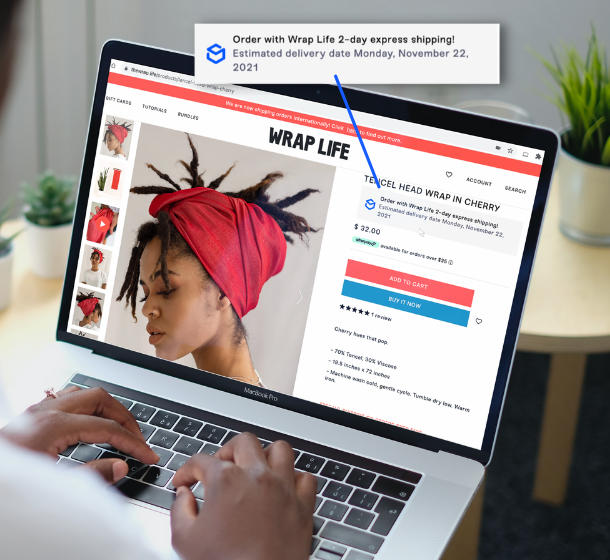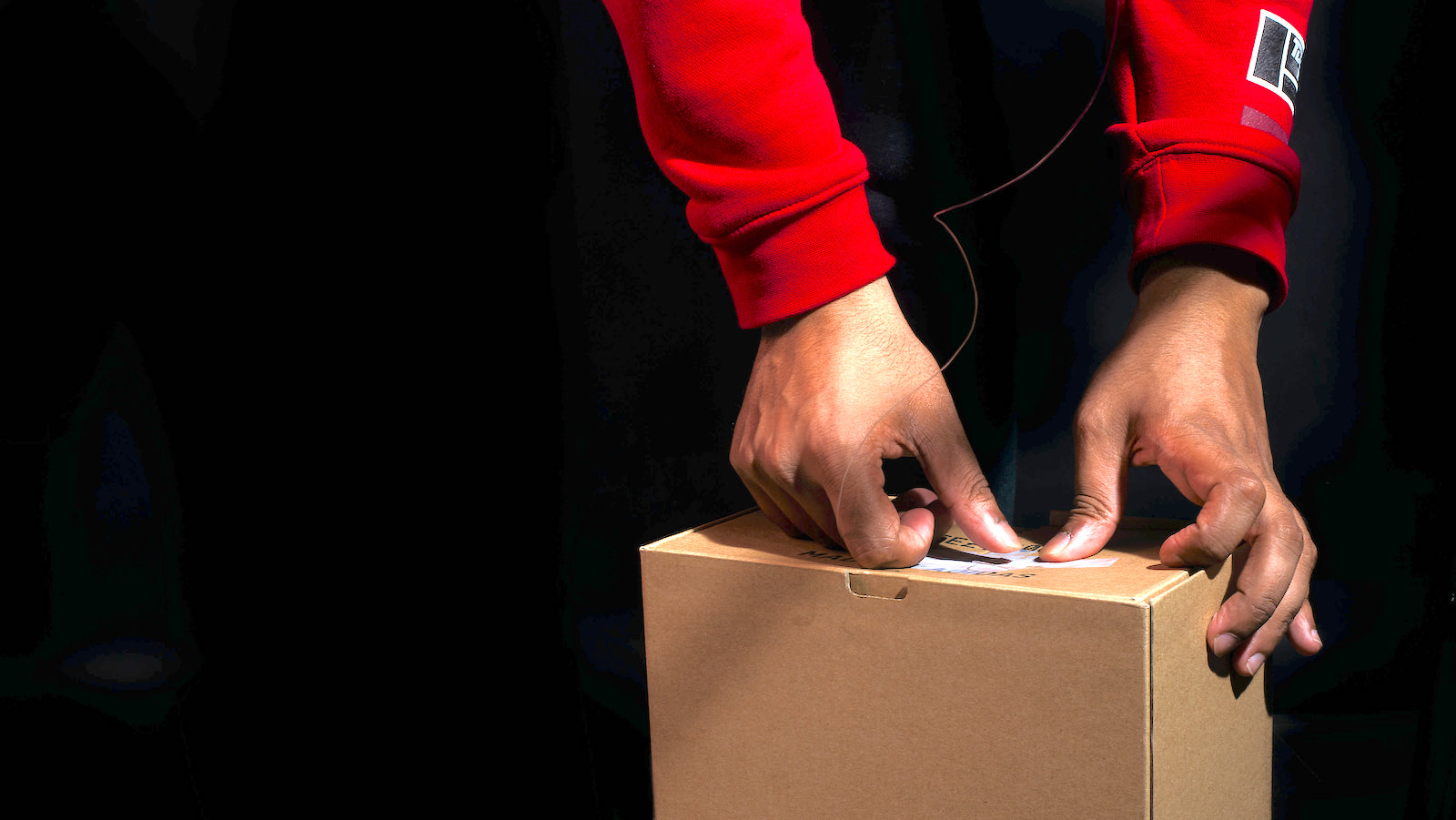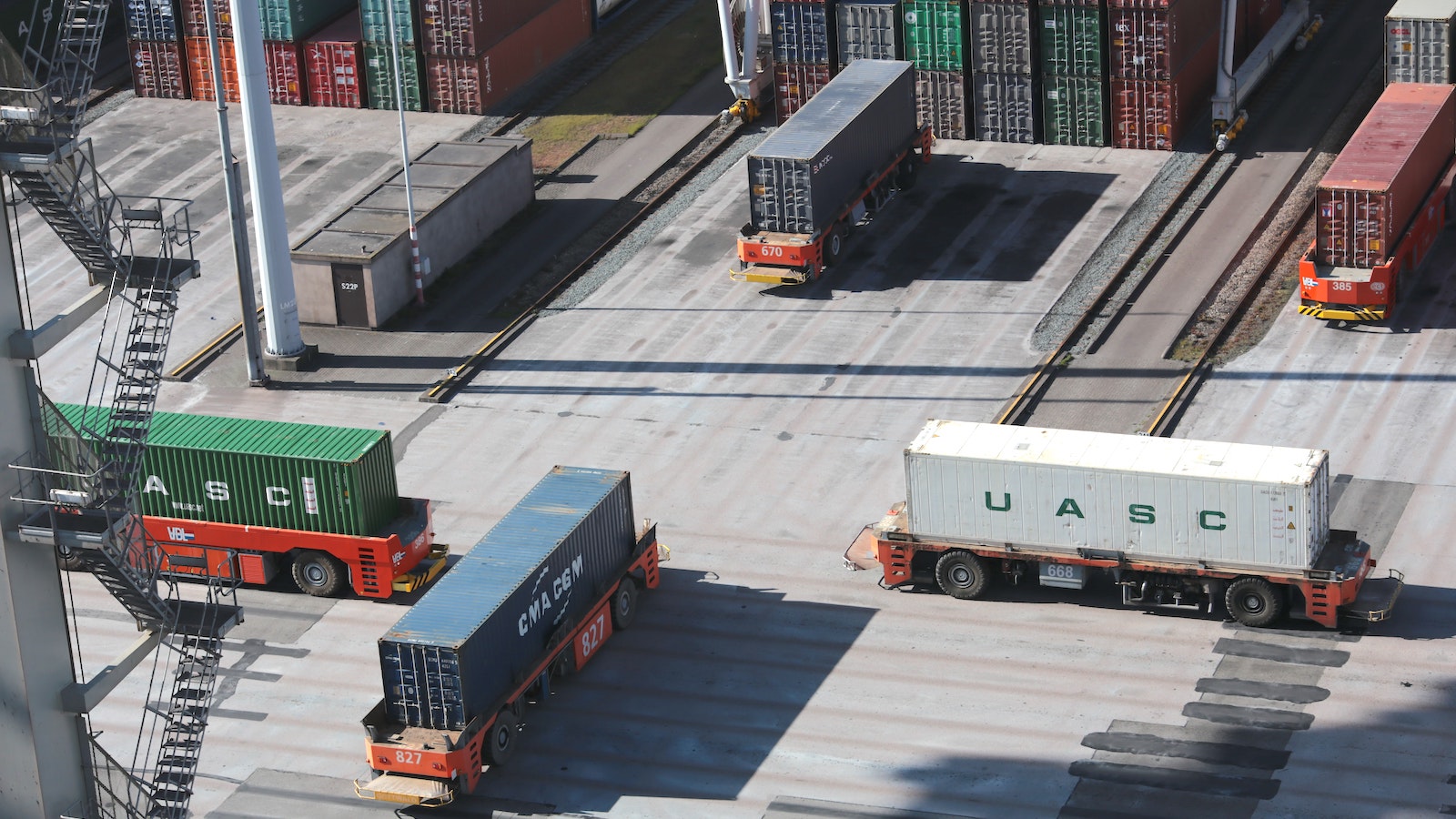Table of Contents
** Minutes
Why should the shipping experience be a priority for ecommerce companies?
Everything you need to consider before shipping a package
The 5-step process to shipping a package
Top shipping carriers compared
Fast and/or free shipping is one of the most important factors that plays into the buying decision for online shoppers.
For DTC shipping, ecommerce businesses must find the right balance between speed and affordability to create an exceptional shipping experience overall.
However, optimizing shipping operations is easier said than done.
In this article, we’ll discuss how to effectively ship a package as part of your ecommerce shipping strategy.
Why should the shipping experience be a priority for ecommerce companies?
How important is the shipping experience? Here are some stats:
- 73% of consumers view fast delivery as critical online shopping criteria, a 16% increase from 2020.
- Slow delivery caused 64% of consumers to not try a new retailer and 54% to switch retailers.
Since online retail giants like Amazon and Walmart Marketplace established 2-day shipping as the standard, it’s important for all online brands to compete with their shipping strategy.
Here are some core reasons why you should prioritize your ecommerce shipping experience.
Get a competitive advantage
81% of consumers switched retailers because shipping was too expensive.
The ecommerce shipping landscape is dominated by leaders like Amazon and Walmart, as they manage to offer extremely fast yet affordable shipping for just about anything.
Compared to competitors, if you’re able to provide 2-day or free shipping (e.g., using a minimum spend threshold that’s above your average order value, enticing customer to spend more), you should aim to offer it when it makes sense (e.g., for domestic orders).
Improving your shipping experience can give you a leg up on the competition, allowing you to stand apart (or prevent your customers going elsewhere once you finally got them to your store). And having a transparent shipping policy with clear expectations doesn’t hurt.
Garner customer loyalty
When customers enjoy a seamless shipping experience, it increases the likelihood they’ll keep coming back.
However, marketing fast and affordable shipping is only half the battle. If you want to keep your customers coming back, you have to ensure orders are fulfilled and delivered on time.
When you’re putting together a shipping strategy, you have to consider who you’ll partner with to meet the Amazon-level standard.
Fast-growing online businesses in both the DTC and B2B ecommerce space partner with reliable 3PLs that have fulfillment capabilities and distribution centers in strategic locations to speed up last-mile delivery times.
And many of them, like ShipBob, also have partnerships with major global, national, and regional parcel carriers, which diversifies the carrier mix and allows for reduced shipping costs and more shipping options.
Boost conversions
As mentioned, providing fast and affordable shipping is not just an effective way to convince people to complete their purchases — it’s table stakes.
Slow, expensive shipping options can increase your cart abandonment rate, while shipping incentives improve conversions.
If you do offer an Amazon Prime-like experience, be sure customers don’t wait to find out about it once they’re checking out. Using 2-day badges and estimated delivery dates on product pages can be a great tool in increasing conversion rates, as shown below with this ShipBob’s feature for Shopify stores.


Everything you need to consider before shipping a package
From shipping methods to order tracking, there are a few key factors to consider to ship a package in an optimal way.
Shipping methods
First, think of the shipping methods you plan on using. This involves making comparisons across carriers and their shipping services and then deciding which options will work best for your business.
Although faster delivery methods like expedited shipping are popular among customers who want their item fast or are in a pinch, they tend to cost more. Keep in mind that some items will be limited in their shipping options, from products that must be shipped via ground and are restricted when shipping via air, to materials that can’t be shipped to other countries, making shipping internationally a limitation.
Measurements, weight, and packaging options
The size and weight of your package is also important to consider, as it determines the ideal packaging to use.
Since the size of the package is a factor in the cost of shipping, it’s important to choose packaging that fits just right so you don’t get overcharged for shipping in a larger box.
Be sure to get familiar with dimensional weight (DIM), a pricing technique used by carriers that takes package density into account to determine shipping rates. So even if you have a lightweight package, if it’s large, it can be more expensive to ship.
Some items may even be best shipped using envelopes and poly mailers to reduce package weight and shipping costs.
If your brand values the unboxing experience, adding more packaging into the mix (e.g., a marketing insert, gift note, or even packing the order in a custom branded box) may be part of your process to ship an order out.
Cost to ship
The cost to ship your package will depend on several of the factors above, and of course the shipping destination.
Get comfortable with knowing how to calculate shipping costs based on size, distance, weight, and more, so you can determine your overall spending and calculate your profit margins.
This is especially important when offering shipping incentives – you have to make sure you can cover the cost to make a profit.
How to charge for shipping
Next, you should clearly lay out plans on how to charge your customers for shipping. Will you offer:
- Flat-rate shipping?
- Real-time rates?
- Site-wide free shipping? Or free shipping if the shopper meets certain criteria?
Once you have all these details figured out, develop a shipping policy for your customers to quickly find and reference.
Customs info for shipping a package abroad
If you’re shipping items internationally, another vital consideration is the customs and duties.
First, you’ll want to make sure you have tariff codes set up for each product and have the value of each item (which will appear on the commercial invoice and is used to assess duties and taxes for customs clearance), along with a product description.
While you can leave your customers responsible for paying import duties, this can put a damper on the customer experience (and leave surprises for them when they try to collect their order).
You might want to consider delivery duty paid or DDP shipping options to enhance the buying experience for international customers (as opposed to delivery duty unpaid).
“Since implementing DDP shipping, we have seen a drastic drop in these types of inquiries and a lift in revenue of almost 25%!
I love how well integrated the ShipBob software is throughout the entire ecommerce ecosystem and how fast and reliable of a service it is.”
Paul Jackson, Co-Founder of Animalhouse Fitness
Insurance and tracking
Other essential considerations include shipment tracking and insurance for a well-rounded delivery management experience.
Real-time order tracking is crucial if you want to maintain transparency and enhance the customer experience.
Additionally, if you’re shipping a high-value item, you may want to opt for additional shipping insurance to protect you from serious losses in case of any mishaps or accidents.
The 5-step process to shipping a package
Now that you have a clear understanding of the different considerations to ship a package, it’s time to get to the practical steps. Clearly mapping out your own shipping process can enable you to organize your efforts, as you’ll know exactly what to do when.
Let’s take a look at the different steps involved in shipping a package.
Step 1: Choose the right shipping plan for the right products
The first step involves gathering all the essential information, which seems simple, but it is actually one of the most time-consuming steps.
It goes beyond just collecting information about the recipient and their contact details. There are many nuances in shipping different types of products with different rules in place, which is where the main challenge lies. For example:
- How you pack and ship cookies will be very different from how you pack and ship clothes.
- You may need to check national and local laws and regulations to ship items like CBD products.
- Shipping perfumes, hand sanitizers, nail polish, aerosols, and batteries is consideredhazardous materials shipping, and some carriers may require them to be shipped via specific services (or not at all).
- You may need licenses and certifications if you’re manufacturing and selling vitamins and supplements in certain countries.
- To ensure that fragile items are delivered safely, you’ll want to make sure they aren’t handled the same way as a t-shirt would be.
- There’s also the packaging and cost-related considerations when it comes to shipping heavy items or oversized packages.
- There may be additional restrictions and rules in place based on your delivery destination, like mobile phones and oversized products cannot be shipped to APO addresses (and in the US, only USPS can deliver to APO addresses due to security reasons).
Step 2: Use the appropriate supplies and packaging
Depending on the information you’ve collected and the item(s) you’re shipping, you’ll need to find the right packaging options for various order combinations. This step involves two crucial considerations (besides understanding your item’s dimensions): how to keep your product(s) safe and your unboxing experience.
You’ll want to pack the item as securely as possible without wasting materials or space to prevent shipping damages. This would require dunnage for items that need to be kept in places inside a box, or even acquiring poly mailers to pack items in that are not likely to break (e.g., a t-shirt).
If you’re customizing orders in any way, make sure you have all the supplies needed for your ideal unboxing experience and that you have a good system in place so it doesn’t take you too much time.
Step 3: Determine which shipping service you want to use
Next, it’s time to decide on the carriers and shipping service(s) you want to use. You can compare prices, take your volume into account (the more orders you ship, the more leverage you have), and map out whether you’ll have to transport orders to the local post office yourself, or have a carrier pick up from you each day (or outsource this entire process to an ecommerce fulfillment company — more on that below!).
Consider premium shipping options that can ensure fast turnarounds such as overnight delivery, international shipping options, and other methods that will meet your customers’ needs.
Step 4: Generate or print your shipping label
Once you’ve narrowed down the right service to a ship package, you can generate a shipping label. If you’re fulfilling orders yourself from home, you’ll likely need a label printer, ink, and paper.
Otherwise, you can have a carrier or 3PL do this for you.
Step 5: Get the shipment in the mail
After your package is ready, the next stage of the shipping and handling process is handing it over to the shipping carrier, who will then transport it to your customer.
You’ll either need to run to the local post office each day (or several times per day), schedule a courier to pick packages up from your location, or outsource the entire fulfillment process so you don’t spend all your time on packing and shipping.
Top shipping carriers compared
With different shipping carriers having different rates, even for the same package, it’s crucial for ecommerce businesses to compare the options available.
Moreover, the shipping speeds, mail types, and reliability may not necessarily be the same with all carriers.
For instance, while USPS takes 2 to 8 business days to deliver products via ground shipping, UPS may only take 1-3 days.
So to accurately calculate the shipping cost and get the best rates, it’s important to make a proper comparison between leading carriers like USPS, UPS, and FedEx. See one example rate comparison below as an illustrative example, though you are encouraged to do your own research on each carrier’s website.
| Speed | Package size | UPS | FedEx | USPS |
| 1-2 days | Small | $130.10* | $121.70* | $126.80* |
| 3-5 days | Medium | $57.05* | $63.46* | $16.10* |
| 5-7 days | Large | $24 | $52.52* | $21.50* |
*Average price based on standard box sizes on each carrier’s website for a package weighing approximately 2 lbs as of April 2022 shipped from AZ to AR in the United States. These rates are not reflective of ShipBob’s shipping rates. To request a quote from ShipBob, click here.
How can ShipBob help you with shipping a package?
As you can see, the process of shipping a package isn’t always straightforward for ecommerce businesses. There are many complicated nuances and considerations involved, which can be overwhelming and most importantly time-consuming.
That’s why you should consider letting ShipBob store your inventory and ship your packages. Not only do you get a pick, pack, ship 3PL, but a multitude of actionable and invaluable analytics, best-in-class technology, and a partner for long-term growth.
Streamline your shipping logistics
By handling your entire shipping logistics operation for you, ShipBob relieves you of the time-consuming and complicated task of figuring out how to ship your packages efficiently, not to mention keeping stocked with supplies, continuously running to the post office, never getting a day off, and having to lease your own warehouse.
ShipBob streamlines the entire process, from making sure your inventory gets to our warehouse(s) safely and that orders are ready for the fulfillment process after each customer places an order.
Additionally, ShipBob helps you figure out the best carriers to deliver your orders on time and in a cost-efficient manner. You can even let ShipBob take care of your returns management process so that customers can effortlessly return their orders to get their refunds quickly.
“ShipBob’s speed to scale and fast pick, pack, and ship process has been seamless, as our business grew 1,200% in a couple of weeks.
Overall, we have had a great experience having a ShipBob as a partner that can scale fast with us.”
Andrea Lisbona, Founder & CEO of Touchland
Automate your ecommerce shipping
ShipBob simplifies both small business shipping and fulfillment for large ecommerce businesses by automating the shipping process.
By leveraging proprietary software (both used by you and in our fulfillment centers), ShipBob automates the entire process of receiving and processing orders and getting them to the fulfillment queue soon after orders are placed on any of your sales channels.
A team of professionals then begin the process of picking and packing your orders to get them ready for shipment, and carriers pick up from our warehouses each day.
“My end goal when I started Drop FX was to create something that was fully automated, so I could focus on driving sales. I didn’t want to have to worry about inventory and distribution as much.
When I was gearing up to launch the business, I was looking for someone who would automate fulfillment for us. I chose ShipBob, and it turned out to be a very easy and scalable solution.”
Josh Hollings, Founder & CEO of Drop FX
Get the best rates and reduce shipping costs
With ShipBob’s multi-carrier shipping software, we automatically compare rates between multiple shipping carriers and services for each shipment and get the best rates for you. A few benefits include:
- Optimizing fulfillment during peak shipping season and other high-demand seasons seamlessly (with no increase in warehousing costs).
- Storing inventory in multiple fulfillment center locations (even across countries) to reduce transit times and shipping costs.
- Using ShipBob’s lower-cost 2-Day Express Shipping to offer 2-day shipping to all of your customers in the continental US, even from just one fulfillment center, across all of your sales platforms.
Achieving carbon-neutral shipping
For businesses that want to minimize their environmental impact, ShipBob is the go-to 3PL to achieve carbon-neutral shipping. You can also use eco-friendly packaging option.
“Our goal was simple: offset carbon emissions. In our search for the right partner, ShipBob was proactive. We can now share accurate data with our customers regarding the success of our reforestation initiatives.”
Michael Klein, Co-Founder at Herbaly
Learn more about how to ship packages with ShipBob
ShipBob is an omnichannel fulfillment provider with locations across the US, Europe, Canada, and Australia. If you’re looking to offer fast, affordable shipping no matter where your customers live, ShipBob can help.
Click the button below to learn more about your fulfillment and shipping capabilities.
How to ship a package FAQs
Below are answers to common questions on how to ship a package.
How do I ship someone a package?
You can ship someone a package using leading carriers (e.g., FedEx, UPS, and USPS in the US). Consider what you’re shipping, the size and weight of the package, and where you’re shipping to. From there, you can choose the most affordable and fastest shipping option. You can go to your local carrier or post office to get specific information, or check online on the carrier’s website.
How do I ship a package from home?
You can ship a package from home by creating and printing a shipping label and scheduling a courier to pick up the item from your home. Or, you can always bring the item or package to the carrier’s local retail store and they can even pack it in a box for you.
What is the best way to ship a package?
The best way to ship a package varies based on factors like what the item is, how much it weighs, its dimensions, and where you’re shipping to.
It’s best to gather all the information you need about the item you’re shipping and then compare rates and shipping speeds between different services.
How long does it usually take to ship a package?
This will vary, based on where you are located and where you’re shipping the package to. Standard shipping usually takes 2-7 days from the ship date to deliver the item in the United States, for example. Alternatively, you can always look into expedited shipping options to speed up transit times and offer a better customer experience. However, it could cost a lot more.
What are the best shippers?
The best shippers vary depending on the situation, location, speed, and product type. While the leading carriers for domestic shipping in the US are USPS, UPS, and FedEx, carriers like DHL dominate the international shipping industry.
For regional shipping, look to regional parcel carriers like CDL Last Mile Solutions, United Delivery Service (UDS), Lone Star Overnight (LSO), and On Trac.



